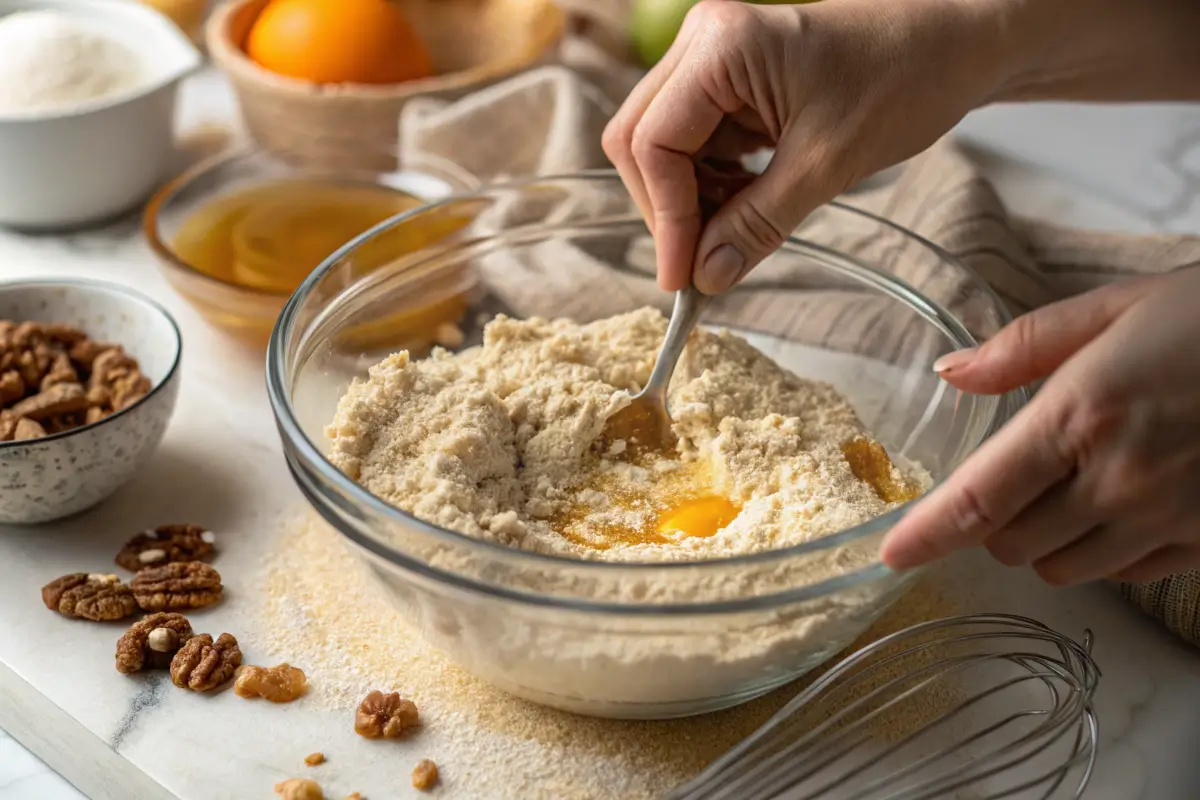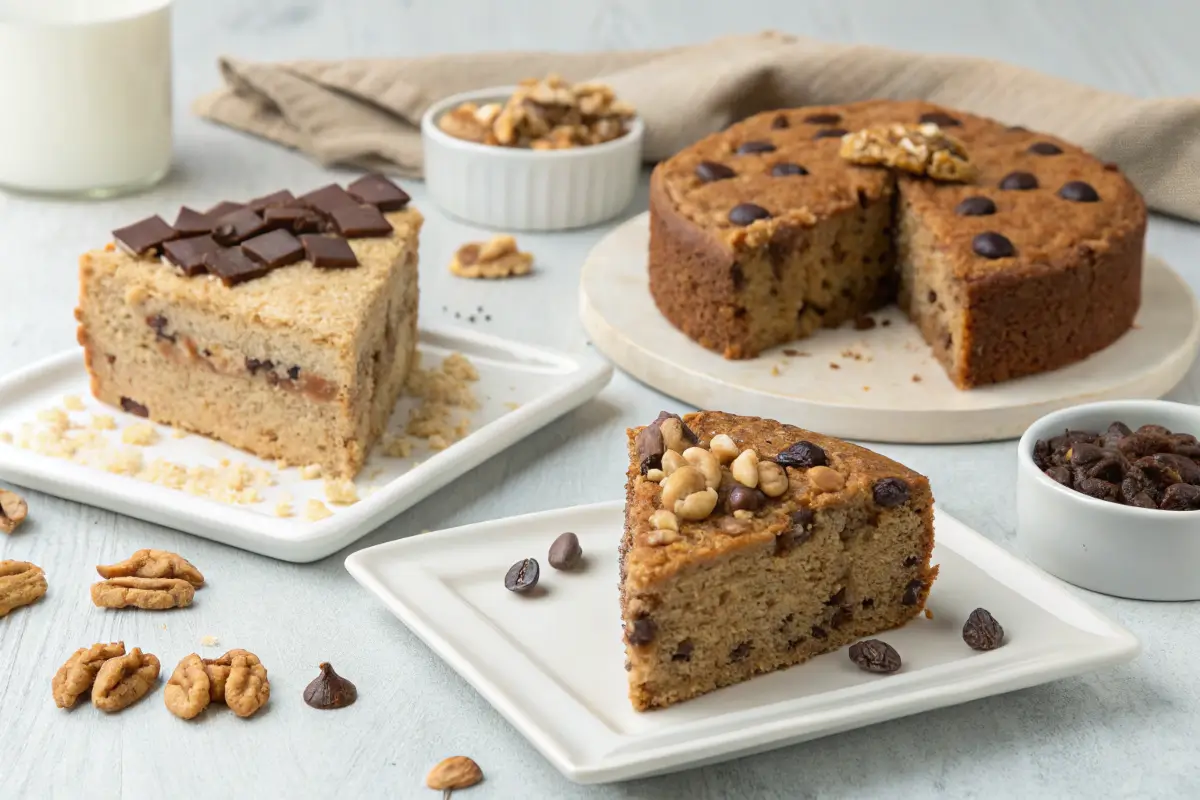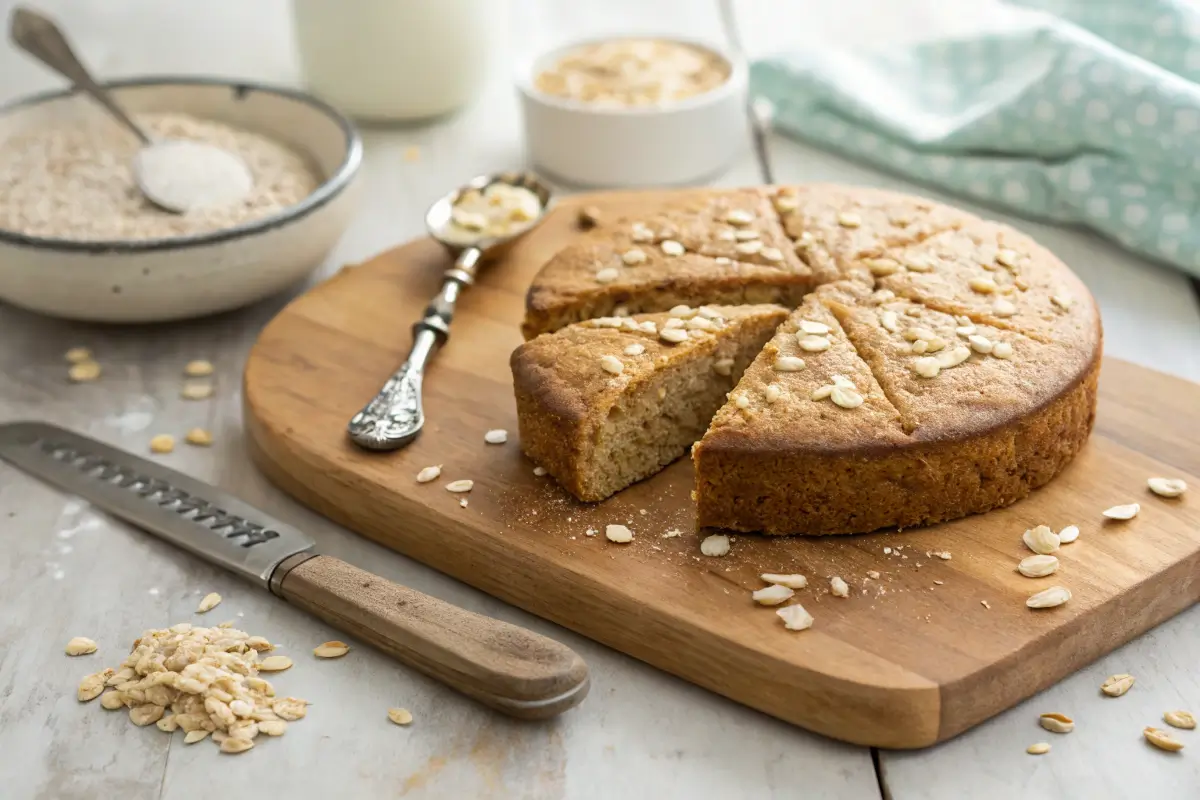Ever wondered about a cake that’s both comforting and surprisingly wholesome? Well, buckle up, because we’re diving deep into the wonderful world of oatmeal cake! This isn’t just any cake; it’s a classic, a hug in a pan, and a delightful way to enjoy the goodness of oats. In this article, we will explore everything from its humble beginnings to delicious variations, baking tips, and even the health benefits this treat offers. We will uncover the secrets behind creating the perfect oatmeal cake, whether you’re a seasoned baker or just starting your culinary journey. So, get your aprons ready, because we are about to bake a cake that is more than just tasty; it’s history and heart.
What is Oatmeal Cake? Unveiling This Classic Treat
History and Origins of Oatmeal Cake
Oatmeal cake, at its core, is a testament to resourcefulness and practicality. It’s not a new invention, not by a long shot. Indeed, this treat has been around for quite some time. Unlike some fancy desserts, oatmeal cake often emerged during times when ingredients were used wisely, typically in rural communities where oats were abundant and inexpensive. You see, back in the day, folks needed ways to make simple, nourishing food that was both filling and delicious, and oatmeal cake fit that bill perfectly!
The Key Ingredients That Define Oatmeal Cake
Now, what makes an oatmeal cake an oatmeal cake? Well, unsurprisingly, it’s the oats! This is the heart and soul of the whole thing. Along with the oats, you’ll find pantry staples like flour, sugar, eggs, and usually some sort of fat—typically butter or oil. Often you’ll see buttermilk or even strong brewed coffee in the mix, which adds some nice depth and keeps things nice and moist. These simple ingredients combine to create a cake that’s anything but ordinary.
Why Oatmeal is a Star Ingredient in Baking
So, why oats, you may ask? Well, aside from being budget-friendly, oats bring a lot to the table, so to speak. They add a unique texture to baked goods, providing a pleasant chewiness that you won’t find in your standard cake. Moreover, oats contribute a subtly nutty flavor that complements other ingredients well. And of course, oats also boost the nutritional profile, adding fiber and some other goodies to a dessert that many would say is meant to be just that—a dessert.
Oatmeal Cake Recipe: A Step-by-Step Guide
Gathering Your Ingredients for the Perfect Oatmeal Cake
First things first, let’s get organized! For a truly spectacular oatmeal cake, you’ll need the basics: rolled oats (not the instant kind), all-purpose flour, granulated sugar, brown sugar (for that extra molasses note), baking soda, baking powder, salt, eggs, melted butter (or oil), buttermilk (or sour milk as a substitute), and some vanilla extract. You might also want to grab some warm spices like cinnamon or nutmeg if you are feeling extra fancy. These simple ingredients are the building blocks of your delicious cake. Having everything measured out and ready to go will definitely make the whole baking process smoother.
Step-by-Step Instructions for Making the Batter

Alright, once you have all your ingredients ready, it’s time to get mixing! Begin by combining the dry ingredients in a large bowl, making sure to whisk them well. Then, in a separate bowl, whisk together the wet ingredients. Now, gradually pour the wet ingredients into the dry ones, mixing just until everything is combined. Don’t overmix, since that can make your cake tough. Finally, gently stir in the oats. The batter should be thick but still pourable. That said, this batter will be a bit more dense than your typical cake batter.
Baking Your Oatmeal Cake to Perfection
Now, you will pour your batter into a prepared baking pan. An 8×8 or 9×13 inch pan works best. Bake in a preheated oven, usually around 350°F (175°C), until a wooden skewer inserted into the center comes out clean. This usually takes somewhere between 30 to 40 minutes, but it may vary a bit depending on your oven. So, just keep an eye on it. The top should be golden brown and the edges should just start to pull away from the pan.
Now that you know the basics of making an oatmeal cake, let’s quickly explore a simple recipe to use as a starting point for experimentation. This basic recipe serves two people, but feel free to adjust the ingredient quantities proportionally for larger groups. You will need: 1 cup of rolled oats, 1/2 cup of all-purpose flour, 1/4 cup of brown sugar, 1 teaspoon of baking powder, 1/2 teaspoon of baking soda, 1/4 teaspoon of salt, 1 egg, 1/4 cup of melted butter or oil, 1/2 cup of buttermilk, and 1 teaspoon of vanilla extract. First, combine the dry ingredients, then whisk the wet ingredients together in a separate bowl. Add the wet to the dry and mix just until combined and fold in the oats. Bake in a preheated oven at 350°F (175°C) until done. This simplified recipe provides a solid base for your oatmeal cake adventures!
Tips for Checking Doneness and Avoiding Common Baking Mistakes
The toothpick test is your best friend when it comes to checking if the oatmeal cake is done. But remember, that even if it’s cooked through, you can still get a dry cake if you overbake it. So, check it often as it approaches the end of the baking time. Also, don’t open the oven too many times while it’s baking since that may lead to an uneven rise. Finally, let the oatmeal cake cool in the pan for at least 10 to 15 minutes before attempting to remove it.
Variations on the Classic Oatmeal Cake

Adding Nuts and Dried Fruits for Texture and Flavor
Want to take your oatmeal cake up a notch? Adding some nuts like walnuts, pecans, or even chopped almonds will add a delightful crunch and a nutty depth. Similarly, dried fruits like raisins, cranberries, or chopped dates will introduce sweetness and chewy textures. These additions not only enhance the flavor but also make every bite a little different! If you are after a simple cake that you can vary with fruits, you can also consider trying out a pumpkin dump cake recipe.
Chocolate Oatmeal Cake: A Decadent Twist
For all the chocolate lovers out there, why not add cocoa powder to your oatmeal cake batter? You can also add some chocolate chips or chunks for an extra dose of richness. This simple addition can transform the comforting oatmeal cake into a truly decadent dessert. This is a good option if you are after something rich and satisfying.
Spiced Oatmeal Cake: Exploring Flavorful Combinations
If you are after a warm and cozy oatmeal cake, you could experiment with spices. Cinnamon and nutmeg are always a good start, but you can also try adding ginger, cloves, or even a pinch of cardamom. These spices can make the oatmeal cake feel a bit more special and comforting. They can bring in a whole new dimension of flavor.
Vegan and Gluten-Free Oatmeal Cake Adaptations
It is possible to make oatmeal cake vegan by replacing eggs with flax eggs or applesauce. For a gluten-free version, substitute the all-purpose flour with a gluten-free blend. You may have to adjust the other ingredients and baking times a little bit to get the same results. However, with just a little tweaking, you can have a vegan and gluten-free cake that is just as delicious as the original version.
Serving and Enjoying Your Oatmeal Cake
Serving Suggestions: Warm vs. Cold, Toppings, and Glazes
The beauty of oatmeal cake is its versatility in serving. You can enjoy it warm, fresh from the oven, with a pat of butter melting on top. Alternatively, it’s just as good cold or at room temperature, making it a great option to prepare ahead of time. As for toppings, a simple dusting of powdered sugar is often enough, or you could go a bit fancier with a cream cheese frosting or a drizzle of caramel glaze. Fruit compotes or whipped cream can also make a lovely addition, so it really depends on your preference. In fact, it makes for a good addition to a brunch spread, and if you are looking for other recipes to add to your brunch table, check out our breakfast brunch recipes.
Best Occasions for an Oatmeal Cake
When is oatmeal cake the right choice? Well, this cake is perfect for just about any occasion. It’s a fantastic brunch item, a comforting dessert after dinner, or even a satisfying afternoon treat with a cup of coffee or tea. Its simplicity makes it great for casual gatherings, but it can also be dressed up for more formal events. You can even have it for a healthy fast food breakfast, as it is easy to prepare and quite nutritious when prepared with the right ingredients. Ultimately, oatmeal cake‘s charm is that it fits in wherever there’s a need for something delicious and homely.
Storing and Keeping Your Oatmeal Cake Fresh
If you happen to have leftovers (though that’s unlikely!), storing your oatmeal cake properly will keep it fresh for longer. Make sure to let it cool completely before wrapping it tightly in plastic wrap or placing it in an airtight container. Stored this way, it should keep for a few days at room temperature or up to a week in the refrigerator. You can even freeze it, for longer storage, but be sure to wrap it well to avoid freezer burn.
Oatmeal Cake: Health Benefits and Nutritional Information
Health Benefits of Oats in Oatmeal Cake
Oats, the star of oatmeal cake, come with some great health perks. They are a fantastic source of fiber, which is important for digestion and can help keep you feeling full. Moreover, they contain essential vitamins and minerals, so they add a bit of nutritional value to your dessert. While oatmeal cake isn’t exactly a health food, it’s certainly a bit more wholesome than some other cakes, mostly thanks to its main ingredient.
Nutritional Breakdown: Calories, Fiber, and More
It is worth considering the nutritional aspect of oatmeal cake, and to be fair, it’s not exactly a low-calorie dish, since it includes butter, sugar, and other ingredients. However, compared to other similar baked goods, oatmeal cake does boast some positive nutritional elements. So, while it shouldn’t be seen as a health food, the fiber content from the oats provides some nutritional benefits. If you are looking to reduce the sugar content, you can also consider a sugar alternative.
Nutritional Content (per 100g)
Here’s an estimated nutritional breakdown for a typical oatmeal cake. Please note that these values are approximate and can vary depending on the specific recipe used:
| Nutrient | Amount (per 100g) |
|---|---|
| Calories | 350-400 |
| Total Fat | 15-20g |
| Saturated Fat | 8-12g |
| Cholesterol | 50-70mg |
| Sodium | 250-350mg |
| Total Carbohydrates | 50-60g |
| Dietary Fiber | 3-5g |
| Total Sugars | 20-25g |
| Protein | 5-7g |
Comparing Oatmeal Cake to Other Baked Goods
How does oatmeal cake stack up against other cakes? Well, it really depends on the specific recipe and other cakes being compared. But generally, it tends to be a bit more dense and moist thanks to the oats and the additional liquids. Moreover, thanks to the fiber in the oats, it can also be more filling, making it a more satisfying option when compared to a light, airy cake that may not keep you full.
Troubleshooting Common Oatmeal Cake Problems
Why is my Oatmeal Cake Dry?
A dry oatmeal cake is a real disappointment, isn’t it? Usually, this is because it was overbaked, so keep an eye on it. Also, too much flour or not enough liquid in the batter can cause dryness. Therefore, making sure you follow the recipe precisely is crucial. Always make sure to properly measure your ingredients, since they all play a crucial role in your cake.
How to Avoid a Soggy Oatmeal Cake
On the other hand, nobody likes a soggy oatmeal cake either! This can happen if you don’t bake the cake long enough. Also, using too much liquid or not allowing the cake to cool properly can also result in a soggy mess. So, let it cool down a bit before you start cutting. Moreover, avoid removing it from the pan until it’s sufficiently cooled.
Dealing with a Cake That Doesn’t Rise
If your oatmeal cake isn’t rising properly, your baking powder or baking soda may be expired or you may not have added enough. Sometimes, if you mix your batter too much, you can also affect the rise. Also, make sure your oven is at the right temperature before you put your cake in to bake. This will all play a major role in getting the rise you are after.
The Best Oatmeal Cake Recipe? Reader and Expert Opinions
Top-Rated Oatmeal Cake Recipes Across the Web
The internet is full of amazing oatmeal cake recipes, each with its own unique twist. Some recipes emphasize simplicity and quickness, while others focus on complex flavors. It really comes down to your personal preference and what you are after. Many food blogs and cooking sites have very well rated oatmeal cake recipes that you may want to try out.
Expert Baking Tips for an Outstanding Oatmeal Cake
So there you have it—a deep dive into the delightful world of oatmeal cake. From its history and basic recipe to variations, health benefits, and troubleshooting tips, we’ve explored all the delicious aspects of this classic treat. Now, it’s your turn! Grab your ingredients, get baking, and experience the joy of a homemade oatmeal cake for yourself. Ready to create? We would love to hear how it turns out, so please share your baking adventures or any personal tips you might have in the comments section below!

